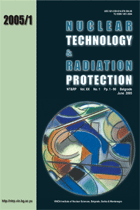
PET IMAGING OF DOSE DISTRIBUTION IN PROTON-BEAM CANCER THERAPY

June 2005
UDC 621.039+614.876:504.06
YU ISSN 1451-3994
....Back to Contents
Pages: 23 - 26
Authors: Joanne BEEBE-WANG, Avraham F. DILMANIAN, Stephen G. PEGGS, David J. SCHLYER, and Paul VASKA
AbstractProton therapy is a treatment modality of increasing utility in clinical radiation oncology mostly because its dose distribution conforms more tightly to the target volume than X-ray radiation therapy. One important feature of proton therapy is that it produces a small amount of positron-emitting isotopes along the beam-path through the non-elastic nuclear interaction of protons with target nuclei such as 12C, 14N, and 16O. These radioisotopes, mainly 11C, 13N, and 15O, allow imaging the therapy dose distribution using positron emission tomography. The resulting positron emission tomography images provide a powerful tool for quality assurance of the treatment, especially when treating inhomogeneous organs such as the lungs or the head-and-neck, where the calculation of the dose distribution for treatment planning is more difficult. This paper uses Monte Carlo simulations to predict the yield of positron emitters produced by a 250 MeV proton beam, and to simulate the productions of the image in a clinical PET scanner.
Key words: proton therapy, positron emission tomography, Monte Carlo simulation
FULL PAPER IN PDF FORMAT (598KB)
Last updated on September, 2010